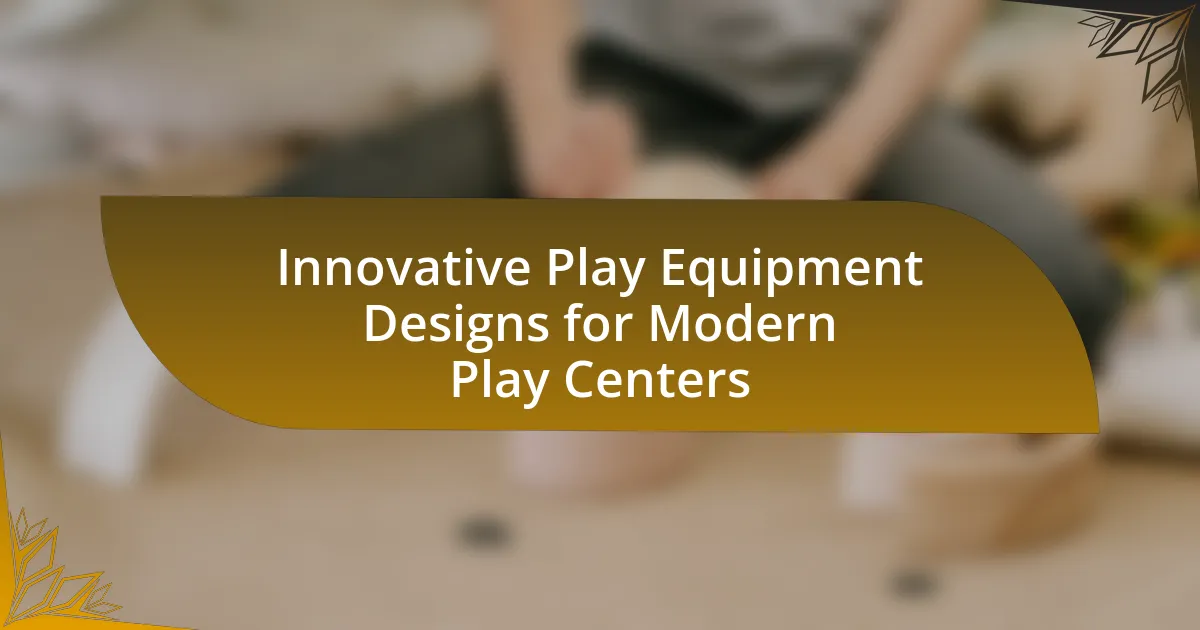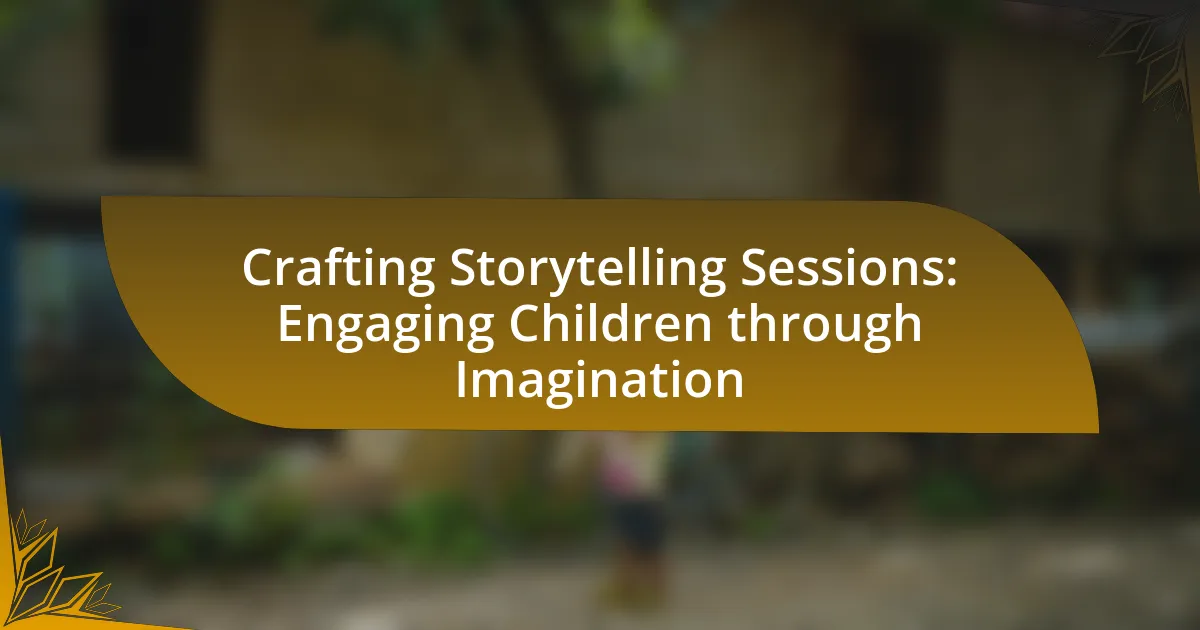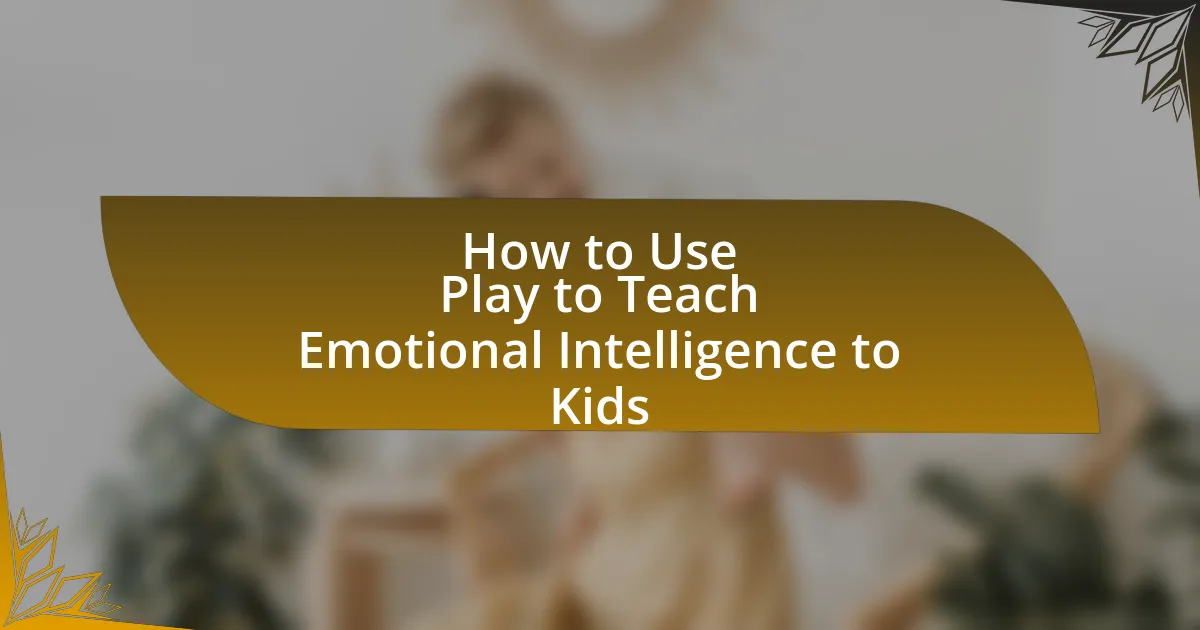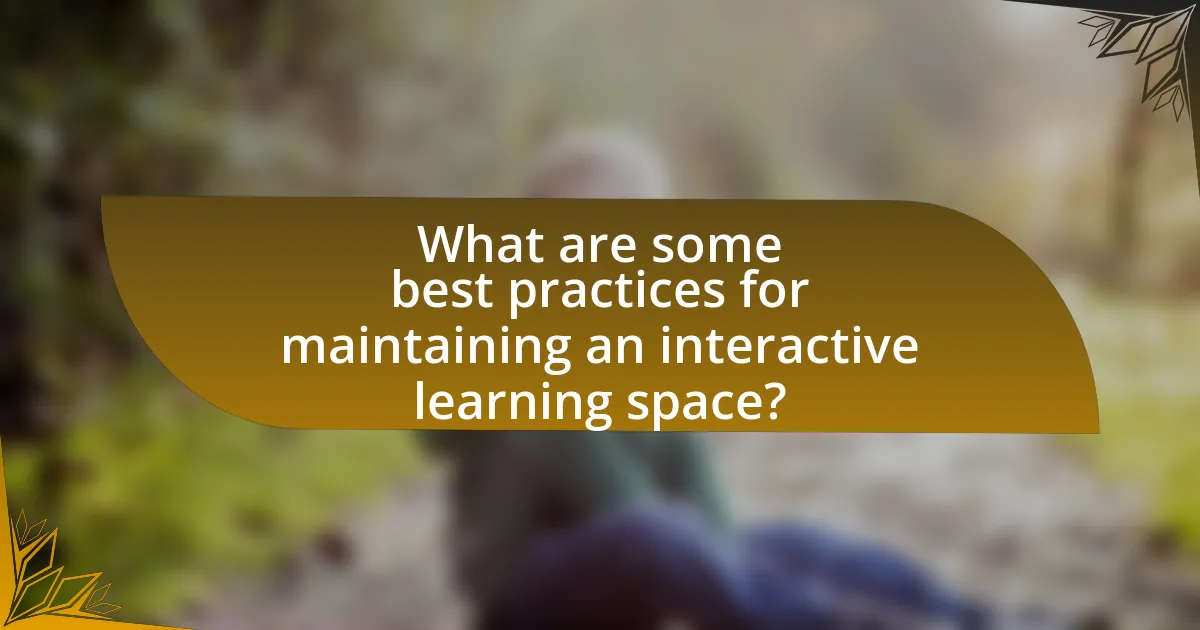The article focuses on popular materials used in children’s play equipment, specifically wood, metal, plastic, and rubber, highlighting their pros and cons. It emphasizes the importance of material selection for safety, durability, and environmental impact, detailing how each material contributes to the overall play experience. Key factors influencing material choice include safety standards, cost considerations, and the environmental footprint of materials. The article also discusses the specific characteristics of wood, plastic, and metal, including their advantages and disadvantages, as well as maintenance requirements and safety features associated with each material.
What are the popular materials used in children’s play equipment?
Popular materials used in children’s play equipment include wood, metal, plastic, and rubber. Wood is favored for its natural aesthetic and durability, often used in climbing structures and swings. Metal, typically steel or aluminum, provides strength and longevity, commonly found in slides and frames. Plastic is lightweight, weather-resistant, and safe for younger children, frequently used in playhouses and slides. Rubber is utilized for safety surfacing, reducing injury risk from falls. These materials are chosen based on their safety, durability, and suitability for outdoor conditions, ensuring a safe and enjoyable play experience for children.
Why is material selection important for children’s play equipment?
Material selection is crucial for children’s play equipment because it directly impacts safety, durability, and play experience. Safe materials reduce the risk of injuries, as they can be designed to absorb impact and minimize sharp edges. For instance, materials like rubber and certain plastics are often used for their shock-absorbing properties, which can significantly lower the incidence of accidents. Additionally, durable materials ensure that the equipment withstands weather conditions and heavy use, prolonging its lifespan and maintaining safety standards. Research indicates that equipment made from high-quality materials can last up to 20 years, providing consistent safety and enjoyment for children. Thus, careful material selection is essential to create a safe and enjoyable play environment.
What factors influence the choice of materials for play equipment?
The choice of materials for play equipment is influenced by safety, durability, cost, and environmental impact. Safety is paramount, as materials must meet specific standards to prevent injuries; for example, soft materials like rubber are often used to cushion falls. Durability is essential to withstand weather conditions and heavy use, leading to the selection of materials like metal or high-density plastic. Cost considerations affect the overall budget for playground construction, prompting the use of more affordable materials without compromising safety. Lastly, environmental impact is increasingly important, with a preference for sustainable materials, such as recycled plastics, to minimize ecological footprints.
How do safety standards impact material selection?
Safety standards significantly influence material selection by ensuring that the materials used in children’s play equipment meet specific safety criteria to minimize risks of injury. These standards, such as those set by the American Society for Testing and Materials (ASTM) and the Consumer Product Safety Commission (CPSC), dictate the physical properties, durability, and non-toxicity of materials. For instance, materials must be impact-absorbing to reduce the severity of falls, which leads to the preference for rubber or engineered wood over harder surfaces. Compliance with these standards is essential, as it not only protects children but also helps manufacturers avoid legal liabilities and recalls, thereby reinforcing the importance of adhering to established safety guidelines in material selection.
What are the most common materials used in children’s play equipment?
The most common materials used in children’s play equipment are wood, metal, plastic, and rubber. Wood is frequently utilized for its durability and natural aesthetic, often treated to resist weather and wear. Metal, particularly steel and aluminum, is valued for its strength and longevity, making it suitable for structures like slides and climbing frames. Plastic is popular due to its lightweight nature, ease of maintenance, and safety features, often used in components like swings and playhouses. Rubber is commonly employed for surfacing materials to provide cushioning and reduce injury risks during falls. These materials are chosen based on their safety, durability, and suitability for outdoor conditions, ensuring a safe play environment for children.
What are the characteristics of wood as a material for play equipment?
Wood is a durable and versatile material for play equipment, known for its strength, aesthetic appeal, and natural properties. Its strength allows it to withstand heavy use and various weather conditions, making it suitable for outdoor playgrounds. Additionally, wood has a natural look that blends well with outdoor environments, promoting a more organic play experience.
Wood is also relatively easy to work with, allowing for a variety of designs and structures, from swings to climbing frames. Furthermore, it is a renewable resource, which contributes to environmental sustainability when sourced responsibly. The use of treated wood can enhance its resistance to rot and insect damage, further extending its lifespan in play equipment applications.
How does plastic compare to other materials in play equipment?
Plastic is generally lighter, more durable, and resistant to weather conditions compared to materials like wood and metal in play equipment. This durability allows plastic to withstand wear and tear from frequent use and exposure to the elements, reducing maintenance costs. For instance, studies show that plastic play structures can last over 20 years with minimal degradation, while wooden structures may require replacement or significant repairs within a decade due to rot or insect damage. Additionally, plastic is less likely to splinter or rust, making it a safer option for children.
What advantages does metal offer in the construction of play equipment?
Metal offers several advantages in the construction of play equipment, including durability, safety, and low maintenance. The inherent strength of metal allows play structures to withstand heavy use and adverse weather conditions, significantly extending their lifespan compared to materials like wood or plastic. Additionally, metal can be designed to meet safety standards, reducing the risk of injury through features like rounded edges and stable structures. Furthermore, metal requires less maintenance over time, as it is resistant to rot, pests, and fading, making it a cost-effective choice for playgrounds. These attributes make metal a preferred material in the design and construction of safe and long-lasting play equipment.
What are the pros and cons of using wood in children’s play equipment?
Using wood in children’s play equipment has both advantages and disadvantages. The pros include durability, as wood can withstand significant wear and tear, and its natural aesthetic, which blends well with outdoor environments. Additionally, wood is a renewable resource, making it an environmentally friendly option. On the downside, wood can splinter, posing safety risks, and it requires regular maintenance to prevent decay and insect damage. Furthermore, untreated wood may absorb moisture, leading to mold growth, which can be harmful to children.
What are the benefits of wooden play equipment?
Wooden play equipment offers numerous benefits, including durability, safety, and aesthetic appeal. The natural strength of wood provides a long-lasting structure that can withstand heavy use, making it a cost-effective choice over time. Additionally, wooden equipment is often treated to be splinter-free and can be designed with rounded edges, enhancing safety for children during play. The organic appearance of wood blends well with outdoor environments, promoting a natural play experience that encourages imaginative play. Studies have shown that children are more likely to engage in physical activity when playing on natural materials, which supports their overall development and well-being.
How does wood contribute to the aesthetic appeal of play structures?
Wood enhances the aesthetic appeal of play structures through its natural beauty, warmth, and versatility in design. The organic textures and colors of wood create a visually inviting environment that blends harmoniously with outdoor settings. Additionally, wood can be easily shaped and finished, allowing for creative designs that attract children and parents alike. Studies have shown that natural materials like wood are preferred in playgrounds, as they evoke a sense of nature and promote imaginative play, contributing to a more engaging and visually pleasing play experience.
What safety features does wood provide for children?
Wood provides several safety features for children, including its natural shock-absorbing properties, which reduce the risk of injury during falls. The fibrous structure of wood can help cushion impacts, making it a safer choice for playground equipment. Additionally, wood is less likely to splinter compared to other materials, minimizing the risk of cuts and abrasions. Furthermore, untreated wood is free from harmful chemicals often found in synthetic materials, ensuring a safer environment for children. These characteristics make wood a preferred material in the design of children’s play equipment, promoting safety during play.
What are the drawbacks of wooden play equipment?
Wooden play equipment has several drawbacks, including susceptibility to weathering, splintering, and higher maintenance requirements. Exposure to moisture can lead to rot and decay, reducing the lifespan of the equipment. Additionally, wooden surfaces can splinter, posing a safety risk to children. Regular maintenance, such as sealing and repainting, is necessary to preserve the wood’s integrity and appearance, which can increase long-term costs and labor. Furthermore, wooden play structures may not be as durable as metal or plastic alternatives, particularly in high-use environments.
How does weather affect the durability of wooden structures?
Weather significantly affects the durability of wooden structures by causing deterioration through moisture, temperature fluctuations, and UV exposure. High humidity can lead to wood rot and fungal growth, while prolonged exposure to rain can cause swelling and warping. Additionally, extreme temperature changes can result in cracking and splitting of the wood. UV radiation from sunlight degrades the wood’s surface, leading to loss of strength and color. Studies indicate that untreated wood can lose up to 50% of its strength after several years of exposure to harsh weather conditions, emphasizing the need for protective treatments to enhance longevity.
What maintenance is required for wooden play equipment?
Wooden play equipment requires regular maintenance to ensure safety and longevity. This maintenance includes inspecting for splinters, cracks, or rot, which can compromise structural integrity. Additionally, applying a protective sealant or wood preservative every few years helps prevent weather damage and decay. Regular cleaning to remove dirt, mold, and mildew is also essential to maintain the equipment’s appearance and safety. According to the American Society for Testing and Materials, proper maintenance can extend the lifespan of wooden structures significantly, ensuring they remain safe for children’s use.
What are the pros and cons of using plastic in children’s play equipment?
The use of plastic in children’s play equipment has both advantages and disadvantages. On the positive side, plastic is lightweight, making it easy to move and install, and it is resistant to weather conditions, which enhances durability. Additionally, plastic can be molded into various shapes and colors, promoting creativity and engagement among children. According to a study by the American Society for Testing and Materials, plastic play structures can reduce the risk of injury due to their smooth surfaces and lack of sharp edges.
Conversely, the cons of using plastic include environmental concerns, as plastic is not biodegradable and contributes to pollution. Furthermore, certain types of plastic can become hot in direct sunlight, posing a risk of burns to children. Research from the Journal of Environmental Management indicates that the production and disposal of plastic play equipment can have significant ecological impacts.
What advantages does plastic offer for play equipment?
Plastic offers several advantages for play equipment, including durability, safety, and low maintenance. Its resistance to weather conditions ensures that play structures remain intact and functional over time, reducing the need for frequent replacements. Additionally, plastic is lightweight, making it easier to install and relocate, while its smooth surfaces minimize the risk of injury to children during play. Furthermore, plastic can be molded into various shapes and colors, enhancing the aesthetic appeal of play equipment and encouraging imaginative play. These characteristics make plastic a preferred choice for manufacturers and playground designers.
How does plastic enhance safety in children’s play areas?
Plastic enhances safety in children’s play areas by providing a softer, impact-absorbing surface that reduces the risk of injury during falls. Unlike harder materials such as metal or wood, plastic can be molded into various shapes and designs, allowing for rounded edges and smooth surfaces that minimize sharp points. Additionally, many plastic play structures are designed to be lightweight, making them easier to move and install, which can help in creating safer environments. Research indicates that playgrounds with plastic surfaces can decrease the severity of injuries by up to 50% compared to traditional materials, highlighting the effectiveness of plastic in enhancing safety for children.
What makes plastic a cost-effective option for play equipment?
Plastic is a cost-effective option for play equipment primarily due to its low manufacturing costs and durability. The production of plastic is less expensive compared to materials like metal or wood, which reduces the overall cost of play structures. Additionally, plastic is resistant to weathering, corrosion, and decay, leading to lower maintenance costs over time. According to a study by the American Society for Testing and Materials, plastic play equipment can last up to 10 years longer than wooden alternatives, further enhancing its cost-effectiveness by minimizing replacement expenses.
What are the disadvantages of plastic play equipment?
Plastic play equipment has several disadvantages, including susceptibility to fading, cracking, and warping due to exposure to UV rays and temperature fluctuations. These issues can compromise the structural integrity and aesthetic appeal of the equipment over time. Additionally, plastic can become slippery when wet, increasing the risk of falls and injuries. Furthermore, certain types of plastic may contain harmful chemicals, such as phthalates or bisphenol A (BPA), which can pose health risks to children. Studies have shown that prolonged exposure to these chemicals can lead to developmental issues. Lastly, plastic play equipment is often less durable than metal or wood alternatives, leading to a shorter lifespan and increased replacement costs.
How does plastic’s environmental impact compare to other materials?
Plastic’s environmental impact is generally more detrimental compared to materials like wood and metal. While plastic is lightweight and durable, it contributes significantly to pollution, with an estimated 8 million tons entering oceans annually, leading to harm to marine life and ecosystems. In contrast, wood is biodegradable and can be sustainably sourced, reducing its long-term environmental footprint. Metal, while energy-intensive to produce, is recyclable and has a lower risk of contributing to microplastic pollution. Thus, plastic’s persistence in the environment and its contribution to pollution make it a less favorable option compared to these alternative materials.
What are the limitations of plastic in terms of durability?
Plastic has limitations in durability primarily due to its susceptibility to environmental factors such as UV radiation, temperature fluctuations, and chemical exposure. These factors can lead to degradation, brittleness, and loss of structural integrity over time. For instance, studies have shown that prolonged exposure to sunlight can cause certain plastics to become discolored and weakened, reducing their lifespan significantly. Additionally, plastics can become brittle in cold temperatures, making them prone to cracking under stress. This degradation can compromise the safety and usability of children’s play equipment made from plastic, necessitating more frequent replacements compared to more durable materials like metal or wood.
What are the pros and cons of using metal in children’s play equipment?
Using metal in children’s play equipment has both advantages and disadvantages. The pros include durability and strength, as metal structures can withstand heavy use and adverse weather conditions, making them long-lasting. Additionally, metal can be molded into various shapes, allowing for innovative designs that enhance play experiences. However, the cons involve safety concerns, as metal can become hot in direct sunlight, posing a burn risk, and sharp edges may lead to injuries. Furthermore, metal equipment can be more expensive than alternatives like wood or plastic, impacting budget considerations for playground installations.
What benefits does metal provide in play equipment design?
Metal provides durability and strength in play equipment design, ensuring longevity and safety for users. Its resistance to weather elements and wear makes it ideal for outdoor settings, reducing maintenance costs over time. Additionally, metal can support heavier loads, allowing for more complex and varied designs, which can enhance children’s play experiences. Studies indicate that metal structures can last significantly longer than those made from wood or plastic, often exceeding a lifespan of 20 years with proper care.
How does metal contribute to the longevity of play structures?
Metal significantly contributes to the longevity of play structures due to its durability and resistance to environmental factors. Unlike wood or plastic, metal can withstand harsh weather conditions, including rain, snow, and UV exposure, which can degrade other materials over time. For instance, galvanized steel, commonly used in play structures, is coated to prevent rust and corrosion, extending its lifespan significantly, often exceeding 20 years with proper maintenance. Additionally, metal structures can support heavier loads and resist wear from frequent use, making them a reliable choice for playgrounds.
What safety features are associated with metal play equipment?
Metal play equipment is associated with several safety features, including durability, stability, and resistance to weather conditions. These features ensure that the equipment can withstand heavy use and adverse environmental factors, reducing the risk of structural failure. Additionally, metal play equipment often includes rounded edges and non-toxic coatings to minimize injury risks. According to the American Society for Testing and Materials (ASTM), safety standards for playground equipment emphasize the importance of these features in preventing accidents and injuries among children.
What are the potential downsides of metal play equipment?
Metal play equipment can pose several potential downsides, including safety hazards, heat retention, and maintenance challenges. Safety hazards arise from the risk of sharp edges and the potential for injury during falls, as metal surfaces can be unforgiving compared to softer materials. Additionally, metal can absorb and retain heat, making it uncomfortable or even dangerous for children to use during hot weather, as temperatures can rise significantly. Maintenance challenges include susceptibility to rust and corrosion, which can compromise the structural integrity of the equipment over time, necessitating regular inspections and repairs to ensure safety.
How does metal conduct heat and what implications does this have?
Metals conduct heat through the movement of free electrons, which transfer kinetic energy rapidly throughout the material. This high thermal conductivity means that metals can quickly absorb and distribute heat, leading to implications such as the potential for overheating in outdoor play equipment exposed to sunlight, which can pose safety risks for children. For instance, aluminum, a common metal in playground structures, has a thermal conductivity of about 205 W/m·K, making it significantly hotter than surrounding materials when exposed to the sun, thus necessitating careful consideration in design and material selection for children’s play equipment.
What maintenance challenges are associated with metal structures?
Metal structures face several maintenance challenges, primarily due to corrosion, fatigue, and structural integrity issues. Corrosion occurs when metal is exposed to moisture and oxygen, leading to rust, which can compromise the strength and safety of the structure. According to the National Association of Corrosion Engineers, corrosion costs the U.S. economy approximately $276 billion annually, highlighting its significance in maintenance considerations. Additionally, metal structures can experience fatigue from repeated stress, which may lead to cracks and failures over time. Regular inspections and maintenance are essential to address these challenges effectively, ensuring the longevity and safety of metal structures in applications such as children’s play equipment.
What should be considered when choosing materials for children’s play equipment?
When choosing materials for children’s play equipment, safety, durability, and environmental impact are critical factors. Safety is paramount; materials should be non-toxic, free from sharp edges, and able to withstand impact to prevent injuries. For instance, materials like high-density polyethylene and rubber are often used because they provide cushioning and are less likely to splinter. Durability ensures that the equipment can withstand weather conditions and heavy use, with materials such as metal and treated wood being common choices due to their strength and longevity. Lastly, the environmental impact of materials should be considered; opting for sustainable materials, such as recycled plastics or responsibly sourced wood, can reduce ecological footprints. These considerations are supported by guidelines from organizations like the American Society for Testing and Materials, which emphasize the importance of safety and durability in children’s play equipment.
How can parents and educators ensure safety in play equipment material selection?
Parents and educators can ensure safety in play equipment material selection by choosing materials that meet safety standards and are non-toxic. For instance, materials like high-density polyethylene and powder-coated metal are often recommended due to their durability and resistance to weathering, which reduces the risk of injury. Additionally, they should verify that the materials comply with regulations set by organizations such as the American Society for Testing and Materials (ASTM) and the Consumer Product Safety Commission (CPSC), which provide guidelines for safe play equipment. Research indicates that using certified materials significantly lowers the incidence of accidents and injuries in playground settings, reinforcing the importance of informed material selection.










































